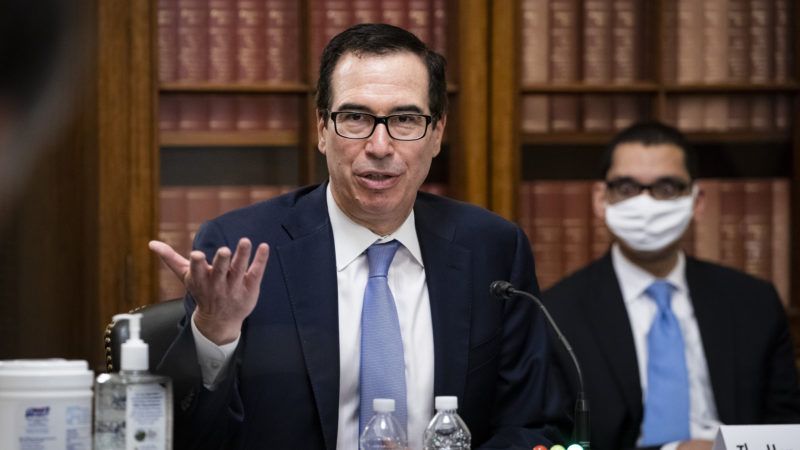The Federal Government Spent Nearly $3 Trillion on Coronavirus Relief. Oversight Has Been a Mess.
Members of Congress may have benefited from small business funds, and government watchdogs are warning that the program appears susceptible to fraud.

When President Donald Trump was asked in April if it was appropriate for large companies and institutions like Harvard to receive funds from coronavirus relief bills, he responded by insisting that he, at least, hadn't benefited. "Well, I know one thing: I didn't get any. That's for sure. I didn't get any," he said.
Members of Congress appear to be a different story.
At least four representatives—two Republicans and two Democrats—have what Politico describes as "close ties" to businesses that have received federal relief funds, meaning that the companies are run by or employ members of their families. As Politico notes, there are likely more beneficiaries in Congress, but a lack of transparency in how the funds are being disbursed makes it impossible to know for sure.
The package of coronavirus relief bills passed earlier this year calls for nearly $3 trillion in federal spending, hundreds of billions of it in the form of loans to businesses harmed by the virus and the lockdowns. Those loans, which can amount to millions of dollars per beneficiary, are better understood as grants: They are fully forgivable provided they are used according to federal directives. But despite the administration's promises to identify grantees, many of the details remain shrouded in secrecy.
The federal government is spending vast sums of money on propping up businesses affected by the pandemic, but it isn't being forthcoming about who or what it's being spent on. On nearly every front, oversight of coronavirus relief spending has been a mess.
Treasury Secretary Steve Mnuchin has defended the lack of transparency, saying that releasing the loans' amounts and beneficiaries would reveal proprietary business information. The loan amounts are based on payroll spending, meaning they could theoretically reveal private financial data about small business operations to competitors. But there are ways around this. As John Cassidy writes at The New Yorker, the administration could list recipients along with funding ranges rather than exact loan amounts.
Many Republicans have resisted efforts to require disclosure for larger recipients as well. A House bill would have required disclosures for all loans over $2 million; although some Republicans voted in favor, 146 GOP representatives voted against it, causing the bill to narrowly fail.
Meanwhile, as Bloomberg reports, the oversight efforts that were put in place are still struggling to come together. There are at least three oversight bodies, each facing staff and managerial issues. Brian Miller, a White House lawyer who the president picked to be special inspector general for pandemic recovery, wasn't sworn in until June 5. The Congressional Oversight Commission, meanwhile, requires bipartisan support for its leadership position; so far, no chairman has been announced. And in April, Trump kept Pentagon inspector general Glenn Fine from leading the Pandemic Response Accountability Committee, a multi-agency group of inspectors general who were also tasked with keeping tabs on federal spending.
That group released an initial report this week warning that loan efforts were subject to fraud and abuse. Some of that may already be happening: In May, the Department of Justice charged an Atlanta-area reality star with fraudulently using a $2 million loan, backed by federal relief funds, to buy jewelry and pay child support. The loan was intended to support jobs at a trucking firm.
It's sadly predictable that the largest emergency spending program in modern U.S. history would be difficult to track and would prove susceptible to fraud and abuse. Just as predictable: The Trump administration appears poised to ask for even more.
Peter Navarro, a top White House economic adviser, recently said the administration is looking to hand out another $2 trillion. Although it's not clear whether the rest of the administration agrees with Navarro's precise ask, it seems reasonably likely that at least one more massive spending bill will come down the line this summer. Before the federal government ponies up another trillion or two, it would be nice to have a better idea about the first $3 trillion was spent.


Show Comments (23)